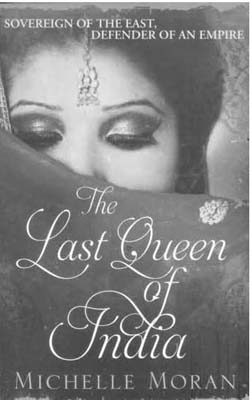The Last Queen of India is an excellent piece of historical fiction by Michelle Moran. The novel revolves around the life of Rani LakshmiBai, the Rani of Jhansi, and chronicles the period of the Great Revolt of 1857. While many of the characters around whom the story revolves in the novel exist and are documented to various degrees of accuracy in historical records, the protagonist seems to be an entirely fictional construct of the author. Sita, the medium through which the story is told, starts out as a young girl, who manages to enlist with the Queen’s all-female bodyguard called the Durga Dal. The novel is presented as the memoirs and recollections of Sita writing many years after the events, and thus frames the first person narrative that Moran favours reasonably well.
The story can broadly be divided into four parts. In the first, we are introduced to Sita and her family, with the introduction serving to help the reader get familiar with the society and its customs and traditions. The first part focuses on Sita growing up in a small village, the conflicts within her family, and the quest to break away from the restrictions her culture, and her highly traditional and draconian grandmother, seek to place on her. She achieves this by joining the Queen’s bodyguard. The second part of the story then shifts to Jhansi, where we see this village girl dealing with the pressures and politics of a 19th century Indian city. In the background the principality of Jhansi, as well as the rest of the country, is slowly marching towards the calamitous events of 1857. As these events come to affect the characters, we find Sita, her friends, and the Queen working to stave off the conflict.

